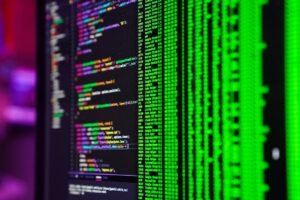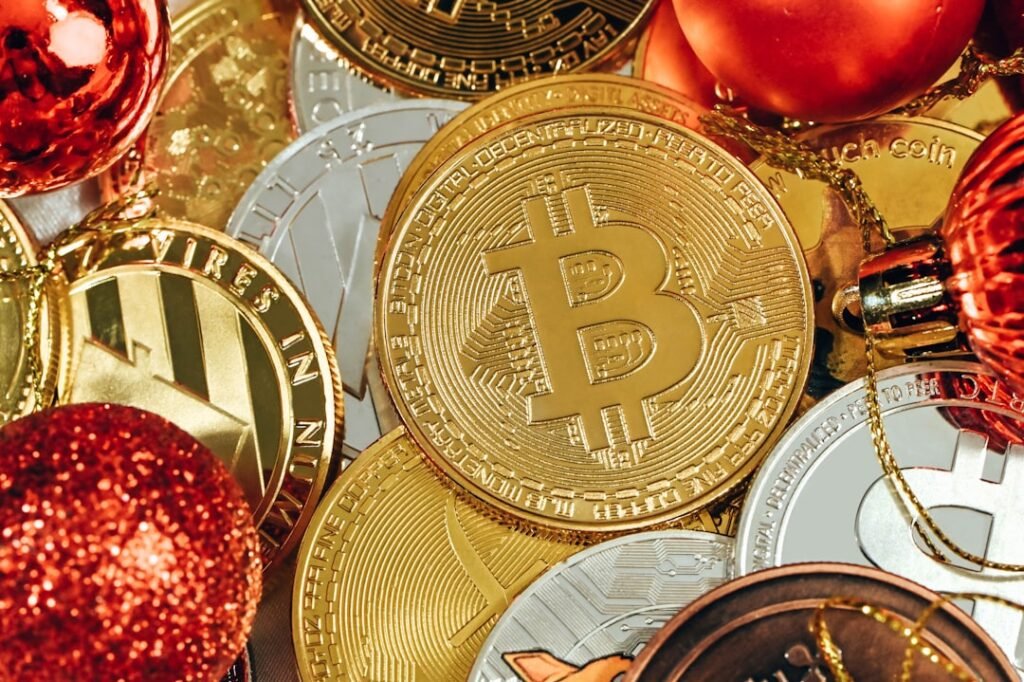Beyond JPEGs: 7 Revolutionary Ways NFTs Are Reshaping Ownership and Value
Non-Fungible Tokens (NFTs) exploded into public consciousness through multi-million dollar digital art sales and pixelated profile pictures. But reducing NFTs to just art and collectibles is like viewing the internet solely as an email platform. The underlying blockchain technology powering NFTs – smart contracts establishing verifiable digital ownership – unlocks transformative potential across vast sectors of our economy and daily lives.
While the digital art boom showcased NFTs' ability to create digital scarcity and provenance, the true revolution lies in how NFTs can fundamentally alter how we establish, transfer, and leverage ownership of almost anything. From the keys to your house to your insurance policy, NFTs are poised to reshape transactions, investments, and access in ways we are only beginning to grasp.
Here are 7 powerful, tangible applications of NFTs moving far beyond the gallery walls:
1. Fractionalizing High-Value Assets: Art, Real Estate & Beyond
Imagine owning a piece of a Picasso, a share in a luxury yacht, or a stake in prime commercial real estate without needing millions in capital. NFTs make this possible through fractional ownership.
- Fine Art: Platforms like Masterworks, Maecenas, and ArtSquare.io tokenize physical masterpieces. An expensive painting is represented by multiple NFTs, each signifying partial ownership. This democratizes art investment, allowing individuals to diversify portfolios with historically high-performing assets previously inaccessible due to cost barriers. While fractional owners don't physically possess the artwork, they hold a verified stake in its value and potential appreciation.
- Real Assets: The concept extends dramatically to real estate, yachts, private jets, and other high-value tangible assets. Companies like RealT tokenize residential properties, while Salient Yachts focuses on fractional yacht ownership via NFTs. Investors gain exposure to asset classes known for stability and potential returns, trade their ownership fractions on digital platforms, and build diversified real asset portfolios without the massive upfront costs or management hassles.
2. Streamlining & Securing Real Estate Transactions
Buying a home often involves mountains of paperwork, intermediaries, and potential for delays or disputes. NFTs offer a path towards more transparent, efficient, and secure property transfers.
- Tokenized Title: A homeowner can create an NFT representing the property's title. When the sale is finalized and conditions met (like payment), the NFT is transferred to the buyer, digitally establishing their ownership on the immutable blockchain. This process promises reduced paperwork, faster closings, enhanced security against fraud, and a clear, auditable chain of custody.
- Platforms in Action: Propy is pioneering decentralized title registries using blockchain to track real estate lifecycles. While widespread regulatory adoption is still evolving, the potential for revolutionizing property transactions is immense.
3. Revolutionizing Vehicle Ownership & Provenance
Similar to real estate, establishing and transferring car ownership often relies on physical paper titles prone to loss, damage, or fraud. NFTs offer a digital solution.
- Digital Car Titles: An NFT can be uniquely associated with a specific vehicle, acting as its digital title. This could streamline registration processes, provide instant proof of ownership, and create an immutable history of the vehicle's ownership and potentially even maintenance records.
- Current State & Luxury Focus: Regulatory hurdles remain significant before NFTs replace paper titles universally. However, companies like CarForCoin are already offering NFTs alongside traditional titles for luxury vehicles, enhancing provenance and potentially simplifying future sales for collectors. This highlights the early adoption curve, starting with high-value assets where provenance is critical.
4. Transforming Insurance Policies & Claims
The insurance industry, burdened with complex paperwork and sometimes opaque claims processes, stands to gain significant efficiency and transparency from NFTs and blockchain.
- Tokenized Policies: Your entire insurance policy – its specific terms, conditions, and coverage details – can be minted as an NFT. This creates a single, immutable, and easily verifiable record accessible to all relevant parties.
- Transparency & New Markets: Blockchain enables transparent claims processing, potentially reducing disputes. Crucially, it opens doors for decentralized insurance models. Platforms like Etherisc allow individuals or groups to create and offer insurance products (e.g., for flight delays, crop protection, hurricanes) without needing a massive traditional insurance corporation. Regulatory frameworks need to adapt, but the potential for innovation and competition is significant.
5. Collateralizing Loans & Tokenizing Debt
NFTs are unlocking new avenues for accessing capital by turning digital assets into collateral and transforming debt instruments themselves.
- NFTs as Collateral: Own valuable digital art or collectibles? Platforms like NFTfi, Pine.loans, and Zharta allow users to borrow funds using their existing NFTs as collateral. This provides liquidity without requiring the owner to sell their digital assets.
- Tokenized Debt Agreements: Debt instruments themselves, including mortgages and personal loans, can be tokenized as NFTs. Brightvine, for instance, tokenizes mortgages, enabling investors to buy, sell, and trade fractional interests in these debt assets. This creates new investment opportunities and potentially increases liquidity in debt markets.
6. Powering Next-Generation Loyalty Programs & Exclusive Access
Brands are leveraging NFTs to create deeper customer engagement, unique rewards, and verifiable exclusivity.
- Beyond Points: Instead of traditional loyalty points, companies can issue NFTs that grant holders special privileges, rare digital collectibles, personalized experiences, or exclusive access to events, products, or content. Think VIP treatment, unique digital items, or early product drops.
- Tradeable Value: Unlike most loyalty points, these tokenized rewards can often be traded or sold on secondary markets, adding tangible value for the customer. Major players like Taco Bell and Nike (with its "Cryptokicks" patent) are experimenting, while platforms like Venly enable smaller businesses to create custom NFT reward programs.
7. Verifying Provenance & Authenticity in Logistics & Luxury Goods
The immutable nature of blockchain makes NFTs ideal for tracking the journey of physical goods and guaranteeing their authenticity.
- Supply Chain Transparency: Imagine tracking a product from raw material to store shelf with guaranteed data integrity. NFTs can be associated with physical goods (e.g., luxury handbags, pharmaceuticals, organic produce). Timestamped metadata recorded on the blockchain at each stage (manufacturing location, shipping timestamps, storage conditions, customs clearance) creates an unforgeable provenance record. This combats counterfeiting, ensures ethical sourcing, and provides consumers with verifiable product history. While requiring industry-wide adoption of scanning infrastructure, projects by giants like Maersk (TradeLens) and IBM (Food Trust) demonstrate the serious exploration of blockchain for logistics.
- Luxury Goods Authentication: NFTs provide a digital certificate of authenticity for high-end items like diamonds, watches, or designer goods. Linked to the physical item (potentially via NFC tags or QR codes), the NFT proves origin and ownership history, significantly reducing counterfeiting risk and enhancing resale value. This solves a long-standing problem in the luxury market.
The Future is Tokenized (Proceed with Awareness)
The applications outlined above are not distant sci-fi concepts; they are being actively developed and piloted today. NFTs represent a fundamental shift in how we conceive of and manage ownership, value, and access in the digital age. They promise:
- Increased Liquidity: Fractionalization unlocks markets for previously illiquid assets.
- Enhanced Transparency: Immutable blockchain records reduce fraud and increase trust in transactions.
- Reduced Friction: Streamlining complex processes like real estate closings or supply chain tracking.
- New Economic Models: Enabling decentralized finance (DeFi) applications, novel insurance products, and innovative reward structures.
- Democratized Access: Opening investment opportunities and exclusive benefits to wider audiences.
However, this frontier is not without its challenges. Regulatory frameworks are still catching up, scalability and environmental concerns (depending on the blockchain) need addressing, user experience must improve, and the technology itself is evolving rapidly.
The key takeaway? NFTs are far more than digital art. They are a powerful technological innovation with the potential to reshape industries as diverse as finance, real estate, logistics, insurance, retail, and entertainment. While risks exist and due diligence is essential, ignoring the transformative potential of NFTs beyond the realm of collectibles means overlooking a significant wave of digital innovation. The tokenization of ownership and value has only just begun.










